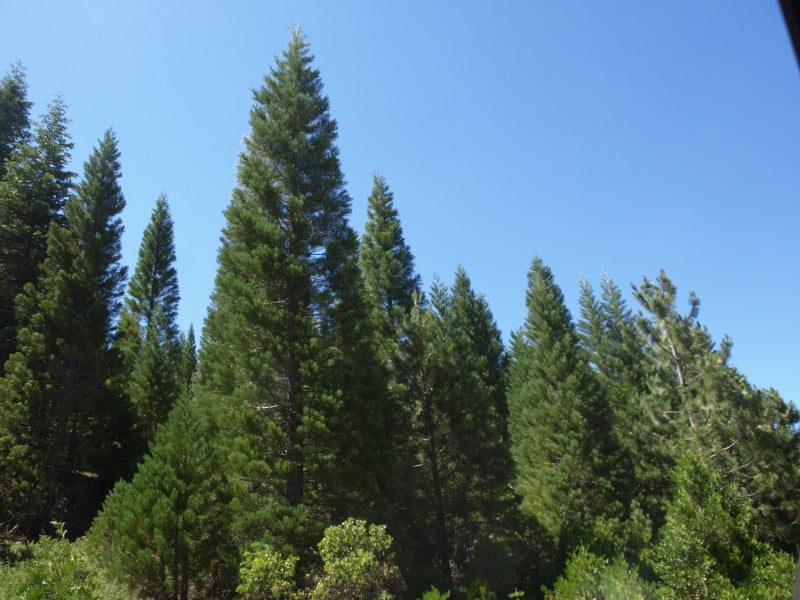Those who do not have power over the story that dominates their lives, power to retell it, rethink it, deconstruct it, joke about it, and change it as times change, truly are powerless, because they cannot think new thoughts. …Salman Rushdie

Democratic operatives and pundits, the Ds, talk as if Republican power players attend to three things: God, Guns, and Gays. The Ds will sometimes expand the three to include Anti-environmentalism or what I have called a Republican war on Nature. What else?
Republican operatives and pundits, the Rs, talk as if Democrat power players attend to Socialism, Collectivism, Paganism, Atheism, Intellectualism, Secular Humanism. What else?
Meanwhile Rs talk about themselves in terms of family values, religious faith, individual freedom and exceptionalism, economics of free markets. What else?
Meanwhile the Ds talk about themselves in terms of community, consilience, connectedness to nature, critical inquiry, democratic traditions, economics of markets as part of political economy. What else?
I sometimes wonder whether these political power players can talk with one another. Have their “identities” and “narratives” become so divorced from one another as to make meaningful conversations unlikely or even impossible?
Notice that I implicitly introduced the notions of in-group and out-group above. I also introduced the idea of stereotyping. This will prove helpful because we are going to use both when we get into two books, The Trouble with Reality, and Demagoguery and Democracy. For now, though, let’s muddy the waters a bit by suggesting that the Rs and the Ds don’t even approach their party identity the same way. Consider, Republicans and Democrats Can’t Even Agree About How They Disagree (Washington Post, 9/7/2016)
… The Republican Party defines itself in ideological terms as the vehicle of symbolic conservatism. The Democratic Party, in contrast, is organized as a social group coalition. …
Republican leaders have a strong incentive to frame electoral choices in broad ideological terms: conservatism vs. liberalism; small government vs. big government; cultural traditionalism vs. social radicalism.
Democratic candidates, in contrast, prefer to emphasize disagreements over individual policies….
[P]olitical elites reinforce these distinct party identities when they communicate with the American public. Republican Party leaders encourage their voters to see the GOP as standing for a set of broad traditions and values. Democratic Party leaders push their voters to focus on the discrete interests of each social group within the Democratic coalition.
I suspect that both parties aren’t quite like depicted above. The Ds are probably more ideologically oriented and the Rs are more oriented around social groups. But both parties retain some of the identities identified by Grossmann and Hopkins. Muddied waters!
One way out of our current political mess would require that both the Rs and the Ds reflect on what they have become in terms of identities, narratives, speech (conceptual framing, rhetoric, propaganda, etc), and actively seek means to find common(er) ground upon which to deliberate and effect the work of Democratic Governance.
It seems to me, though, that neither the Ds nor the Rs have the interest or desire to try to learn from one another or to learn how to jointly craft law or policy. And there is no one to compel them to better behavior. Maybe they are just trapped in a socially-constructed quagmire that disallows them from speaking or acting differently. They act-out; shouting at one another, grandstanding, and playing muscle ball with each other, trying to gain favor for themselves and their party in a winner-take-all contest. The potential harms to our democratic traditions are large, including continued gridlock and impasse, but also opening the door for an authoritarian takeover. Whoa! (Liberals in-group bias warning: Robert Reich’s Fifteen Ways to Spot a Tyrant, Newsweek, 1/3/2017,
Bob Altemeyer’s life-work on Authoritarianism, Wikipedia)
But this story is not really about politicians. It is about us. We, the constituents who have the very same trouble. We, who pretend to be above the fray: “Surprise: we are in this together.” And we won’t get out of any of it unless we learn to change ourselves. Only then can we demand better behavior from our elected leaders. If any here believe that stereotypes are just rhetoric that politicians sling like arrows at one another, think again.
The Trouble with Reality
In The Trouble with Reality: A rumination on moral panic in our time (liberals in-group bias alert), 2017, Brooke Gladstone reminds us that we construct the reality we see, based on stereotypes:
… Our worldview is built on a bedrock of stereotypes, not just about people, but about the way things work. The power of those stereotypes—vital to survival in this unfathomable world—is as profound as it is inescapable.
Stereotypes, [Walter] Lippmann found focus and feed on what is familiar and what is exotic, exaggerating each in the process: “The slightly familiar is seen as very familiar and the somewhat strange as sharply alien.” They are refreshed continually, both by close observation and false analogy.
True or not, they carve neural pathways, sluices that stem the torrent of conflicting impressions and ideas churning through the umgebung [environment, surroundings, neighborhood].
In the end, stereotypes create the patterns that compose our world. It is not necessarily the world we would like it to be, he says, it is simply the kind of world we expect it to be. … (pp. 8-9)
Periodically, these stereotyped realities get smashed. A paradigm shift, is an example, when applied to professionals. Smashups are infrequent, and often repelled since we find them too threatening. Many (most?) people cling on to former belief systems or stereotypes, choosing to avoid the pain of threats to their umwelt, their self-centered “worldview.”
Those who do alter their worldview, only change it enough to allow them to move forward, retaining or clinging onto as much of their old worldview as possible. Seeking safety in the comfort zone.
Note: For any who may be disinclined to buy into the stereotype model, another way to frame this phenomenon is to use a construct developed by Chris Argyris called a “Ladder of Inference.” It is most often used a a part of problem solving in a double-loop learning system (pdf, or cartoon-video TED lesson).
Chris Argyris’ Ladder of Inference is represented by a series of steps, beginning at base with observable “data”and experiences, then ladder rungs: 1) selected “data” from personal observation, 2) added meanings ( personal and cultural), 3) assumptions made based on added meanings, 4) conclusions drawn, 5) beliefs adopted or altered about the world, 6) actions taken.
If we use Argyris’ Ladder only to stand on the top two steps and brow beat others with our own versions of reality and rightness and wrongness, and if others do the same, then we set a stage for demagoguery. If, on the other hand, we use the “Ladder” to reflect on our paths to discovery and to continually reassess our worldview, and to cross-compare with others on their life-journey, then we set a stage for civic discovery and effective public deliberation.
Whether we use the model of Stereotypes or the model of Ladders, in the worst case we get to the same end with Ds and Rs standing atop their separate Ladders of Inference, operating on pre-formed beliefs about the world and the perception of the world held by others, often leaping to conclusions or actions that would not happen if they were more reflective and open to change, and if they were to allow that prospect for others. Mostly they do not, setting the stage for ever-more intense conflict and ultimately even war. Is this where we stand today?
Are “we” better than our politicians? Mostly not, sorry to say. Just take a look at some of the trailing comments in this blog. Other discussion blogs get even nastier.
Demagoguery and Democracy
Standing high up on Ladders of Inference and lobbing projectiles at supposed rivals and adversaries is stage-setting labeled as “demagoguery” in Patricia Roberts-Miller’s book Demagoguery and Democracy. 2017. Since Roberts-Miller has a blog I’ll grab a definition of what demagoguery is and what it is not from there:
I’ve argued elsewhere that we’re in a culture of demagoguery, by which I mean that there are certain widely-shared premises about politics and public discourse:
- Every policy/political issue has a single right answer, and all other answers are wrong;
- That correct answer to any political question is obvious to people of good will and good judgment (that is, to good people);
- The in-group (us) is good;
- Therefore, anyone who disagrees with the in-group or tries to get a different policy passed isn’t just mistaken or coming from a different perspective or pointing out things it might be helpful for the in-group to know, but bad, and
- Deliberation and debate are unnecessary, and compromise is simply making a good policy less good.
- So, in a perfect world, all policy decisions would be made by the in-group or the person who best represents the in-group’s needs,
- And, therefore, the ideal political candidates are fanatically loyal to the in-group and will shut or shout down anyone who disagrees.
[By in-group, social psychologists don’t mean the group in power, but the social group of which one is a member. So, for some people, being a dog lover is an in-group, even (or especially) in the midst of a culture in which that identity is marginalized.]
This is not the conventional way of thinking about demagoguery—if you look at a dictionary, it will probably define demagoguery as speech by demagogues (in other words, it reduces the issue to one of identity—a demagogic move).
In common usage, demagoguery is often assumed to be obviously false speech that is completely emotional, untrue, and evidence-free on the part of bad people with bad motives.
That’s a useless definition for various reasons (including that it doesn’t even apply to many of the most notorious demagogues); it’s also actively harmful in that it impedes our ability to identify in-group demagoguery—that is, demagoguery on the part of people we like. And it does so because we can tell ourselves this isn’t demagoguery if:
- we think we are calm while reading the text, and the text (or rhetor) has a calm tone
- we believe the claims in the text are true
- the claims can be supported with evidence
- we believe the people making the argument are good people
- we believe they have good motives
One of the things I want to suggest in this talk is that teachers of writing are often unintentionally engaged in reaffirming the premises on which demagoguery operates, and we can do so in two general ways: first, by teaching criteria of “bad argumentation” (or demagoguery or propaganda or whatever devil term is in question) that don’t productively identify the problems of certain kinds of public discourse, thereby giving people a false sense of security—as in the above criteria. We can feel comfortable that we aren’t consuming or producing demagoguery when we are. Second, a lot of writing and especially argumentation textbook appeal to the rational/irrational split, assume a binary in epistemologies (so that one is either a naïve realist or relativist), require that students engage in motivism, and rely on a modernist formalism about what constitutes “good” writing.
For instance, if you look at the criteria for determining demagoguery, you can see the standards often advocated for a “good” argument.
If, as I’ll argue, that isn’t a helpful way to think about demagoguery, then the consequent way of teaching argumentation not only ends up reinforcing demagogic premises about public deliberation, but puts teachers in a really difficult place for talking productively about issues like bias and fairness.
So what might we do about our tendencies toward demagoguery? Roberts-Miller gives us hope but no simple answers. From Demagoguery and Democracy:
…First we can try to reduce the profitability of demagoguery by consuming less of it ourselves, and shaming media outlets that rely heavily on it. Second, we can choose not to argue with family or friends who are repeating demagogic talking points, and simply give witness to the benefits of pluralism and diversity [without condoning naive relativism’s anything goes]. Or third, if it seems interesting and worthwhile, we can argue with family or friends who are repeating demagogic talking points. Fourth, we can also support and argue for democratic deliberation.” … (p.94)
… Earlier I mentioned concepts particularly helpful for democratic deliberation: inclusion, fairness, responsibility, self-skepticism, and the “states.” Those can be turned into four basic principles.
First, because demagoguery depends on us and them being treated differently, simply insisting on fairness can go a long way toward u undermining demagoguery. Rhetorical fairness means that, whatever the argument rules are, they apply equally to everyone in the argument. … Second, Fairness, connects to responsibility is that the responsibilities of argumentation should apply equally across all interlocutors, so that all parties are responsible for representing one another’s arguments fairly, and striving to provide internally consistent evidence to support their claims. Third, the people arguing should strive to be internally concocting in terms of appeals to premises, definitions, and standards. … Finally, the issue is actually up for argument—that is, the people involved are making claims that can be proven wrong, and that they can imagine abandoning, modifying, and reconsidering. … (Pp.124-126)
Roberts-Miller concludes Demagoguery and Democracy:
Good disagreements are the bedrock of communities. Good disagreements happen when people with different kinds of expertise and points of view talk and listen to one another, and when we try, honestly and pragmatically, to determine the best course of action for the whole community. Our differences make us stronger. Democracy presumes that we can behave as one community, caring together for our common life, and disagreeing productively and honestly with one another. Demagoguery rejects that pragmatic acceptance and even valuing of disagreement in favor of a world of certainty, purity, and silence of dissent.
Demagoguery is about saying we are never wrong; they are. If we make a mistake, they are to blame; we are always in touch with what is true and right. There is no such thing as a complicated problem; there are just people trying to complicate things. Even listening to them is a kind of betrayal. All we need to do is what we all know to be the right thing. And it’s very, very pleasurable. It tells us we’re good and they’re bad, that we were right all along, and that we don’t need to think about things carefully or admit we’re uncertain. It provides clarity.
Democracy is about disagreement, uncertainty, complexity, and making mistakes. It’s about having to listen to arguments you think are obviously completely wrong; it’s about being angry with other people, and their being angry with you. It’s about it all taking much longer to get something passed than you think reasonable, and taking a long time resisting some policy you think is dipshit. Democracy is about having to listen, and compromise, and it’s about being wrong (and admitting it). It’s about guessing—because the world is complicated….
Democracy is hard; Demagoguery is easy. … (pp. 127-129)
What, if anything, ought we to do? If we and others do nothing might we be headed for a social, cultural,economic, political catastrophe? Or am I just being overly concerned about something that is “fake news” or just a passing phase? Finally, what does any of this have to do with forest policy?








